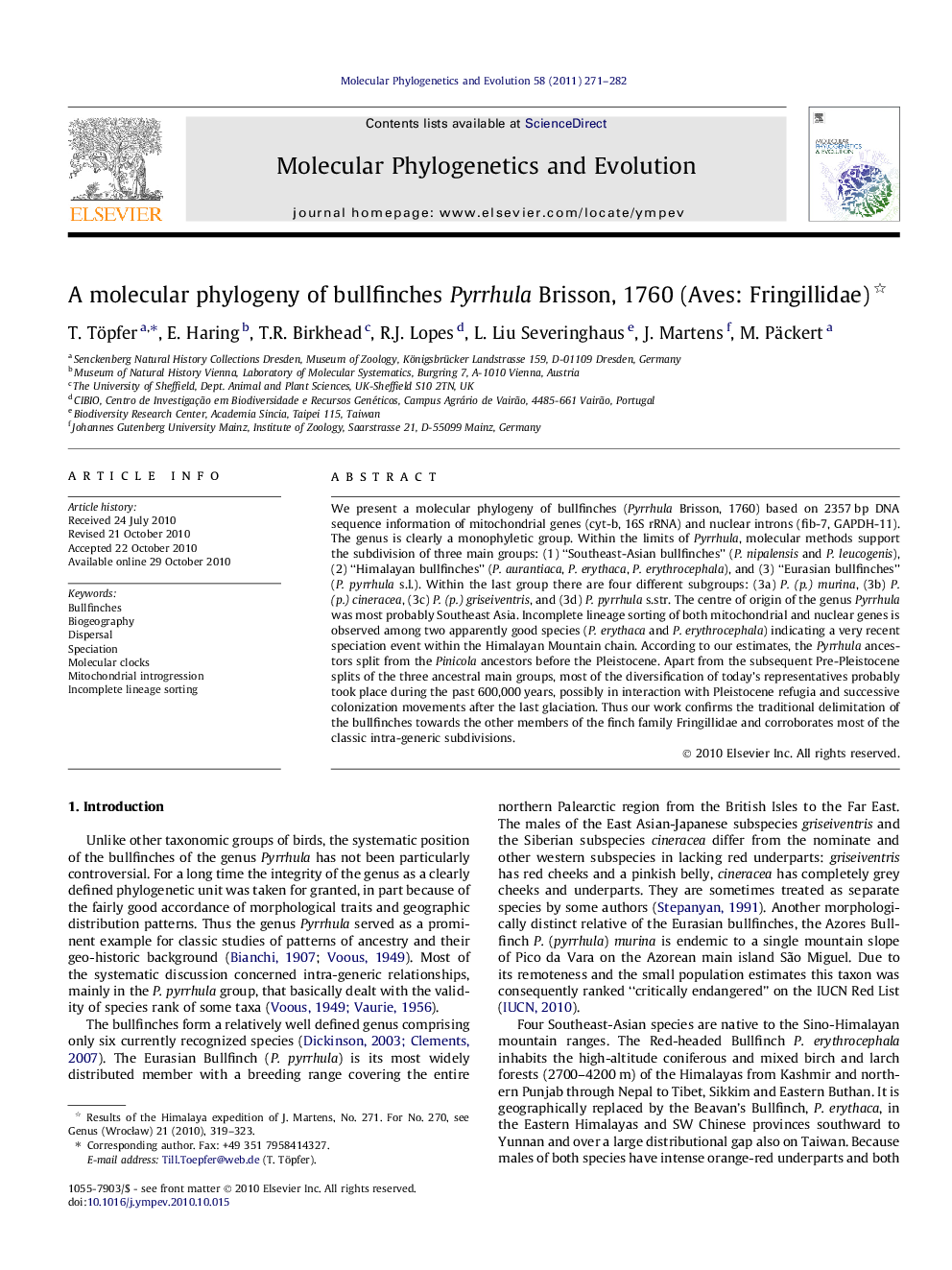| کد مقاله | کد نشریه | سال انتشار | مقاله انگلیسی | نسخه تمام متن |
|---|---|---|---|---|
| 5920785 | 1164308 | 2011 | 12 صفحه PDF | دانلود رایگان |

We present a molecular phylogeny of bullfinches (Pyrrhula Brisson, 1760) based on 2357Â bp DNA sequence information of mitochondrial genes (cyt-b, 16S rRNA) and nuclear introns (fib-7, GAPDH-11). The genus is clearly a monophyletic group. Within the limits of Pyrrhula, molecular methods support the subdivision of three main groups: (1) “Southeast-Asian bullfinches” (P. nipalensis and P. leucogenis), (2) “Himalayan bullfinches” (P. aurantiaca, P. erythaca, P. erythrocephala), and (3) “Eurasian bullfinches” (P. pyrrhula s.l.). Within the last group there are four different subgroups: (3a) P. (p.) murina, (3b) P. (p.) cineracea, (3c) P. (p.) griseiventris, and (3d) P. pyrrhula s.str. The centre of origin of the genus Pyrrhula was most probably Southeast Asia. Incomplete lineage sorting of both mitochondrial and nuclear genes is observed among two apparently good species (P. erythaca and P. erythrocephala) indicating a very recent speciation event within the Himalayan Mountain chain. According to our estimates, the Pyrrhula ancestors split from the Pinicola ancestors before the Pleistocene. Apart from the subsequent Pre-Pleistocene splits of the three ancestral main groups, most of the diversification of today's representatives probably took place during the past 600,000Â years, possibly in interaction with Pleistocene refugia and successive colonization movements after the last glaciation. Thus our work confirms the traditional delimitation of the bullfinches towards the other members of the finch family Fringillidae and corroborates most of the classic intra-generic subdivisions.
.Research highlights⺠Pyrrhula is clearly a monophyletic group (subdivided into three main groups). ⺠Centre of origin of the genus Pyrrhula was most probably Southeast Asia. ⺠Radiation in interaction with Pleistocene refugia. ⺠Most of the diversification of today's representatives happened during the past 600,000 years. ⺠Successive colonization movements took place after the last glaciation.
Journal: Molecular Phylogenetics and Evolution - Volume 58, Issue 2, February 2011, Pages 271-282